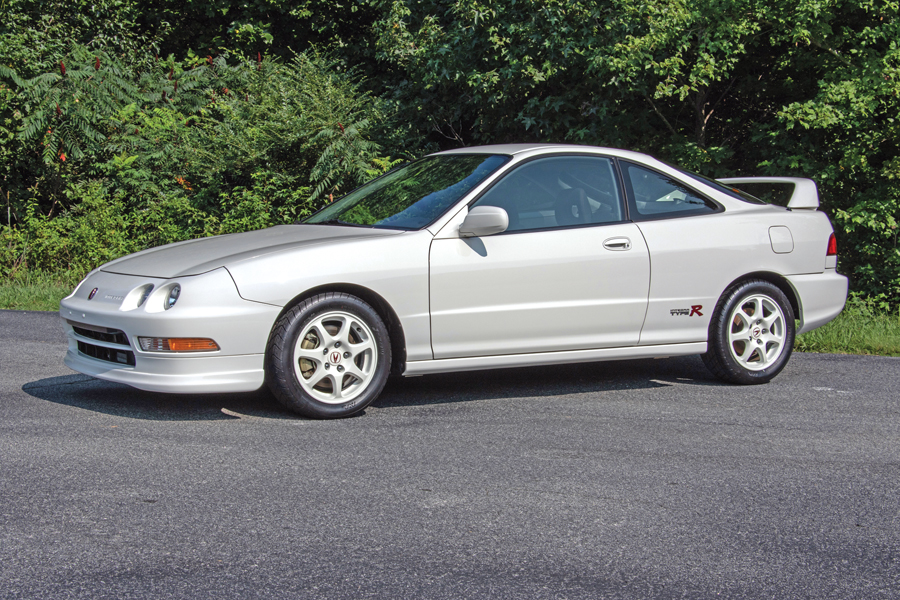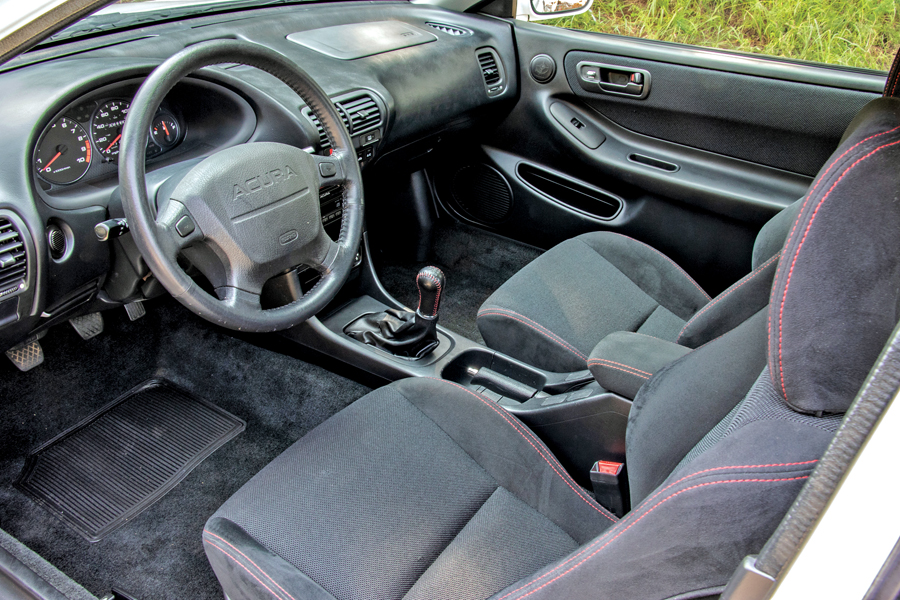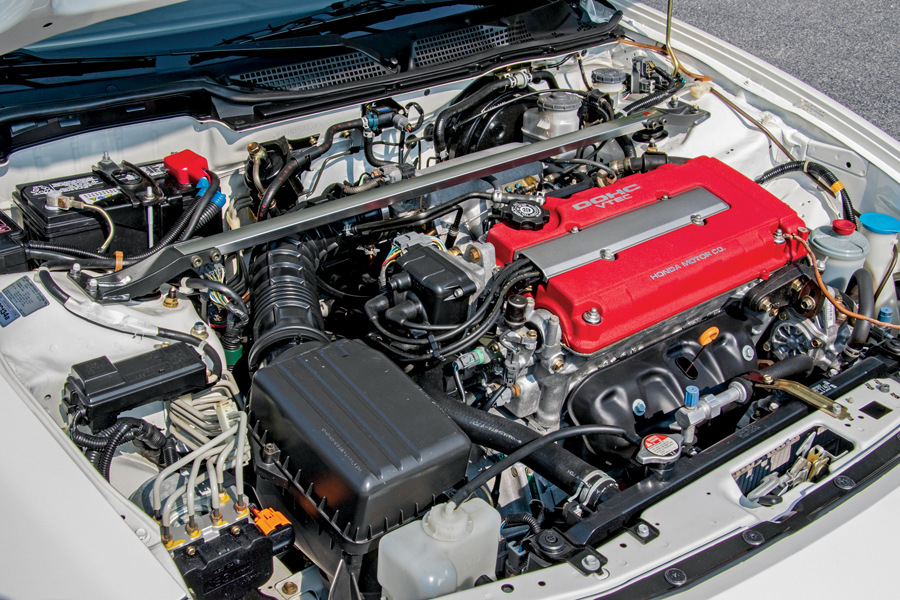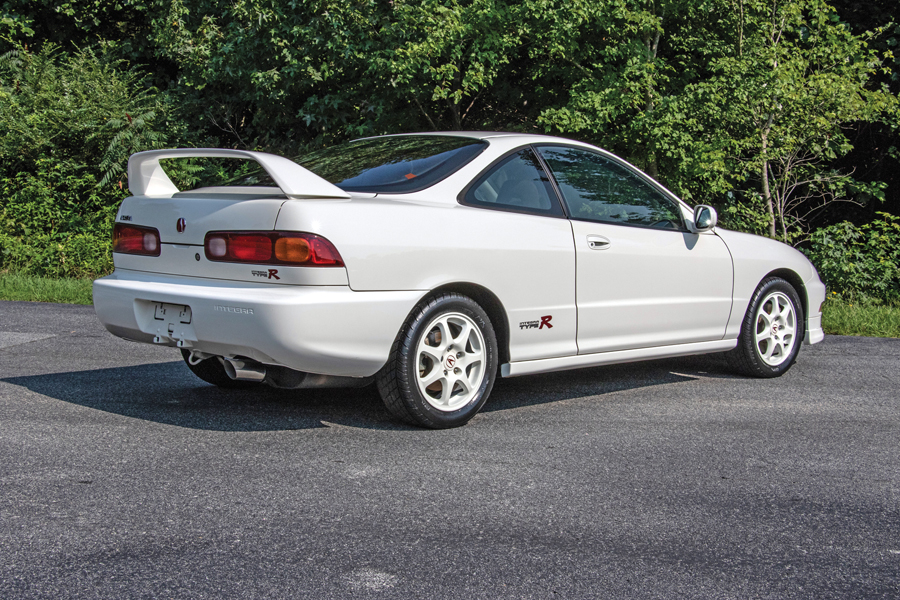SCM Analysis
Detailing
| Vehicle: | 1997 Acura Integra Type R |
| Years Produced: | 1997–98, 2000–01 |
| Number Produced: | 3,822 total, 320 in 1997 |
| Original List Price: | $23,100 |
| SCM Valuation: | $44,140 |
| Tune Up Cost: | $600 |
| Distributor Caps: | $32.60 |
| Chassis Number Location: | Interior badge on center console, driver’s side of the dashboard near A-pillar |
| Engine Number Location: | Stamped in the front side of the engine block to the left of the exhaust headers |
| Club Info: | Integra Type R Club of America |
| Website: | http://itrca.com |
| Alternatives: | 2004–05 Volkswagen GTi R32, 1995–99 BMW M3, 1998–2000 Subaru 2.5RS |
| Investment Grade: | B |
This car, Lot 372, sold for $63,800, including buyer’s premium, at Barrett-Jackson’s September 27–29, 2018, Las Vegas Auction.
Honda had a very strong lineup of sports cars in the late 1990s. The NSX, Prelude and Integra all shared the idea of “less is more.” This allowed for a greater focus on the core design and quality in manufacturing. So when Honda offered the Type R versions of their cars, buyers knew that they were purchasing something really special.
Those searching for a tuned driving experience in an affordable package coveted the Type R Integra.
Honda/Acura offered more that just a little bit of extra horsepower in the Type R cars. In fact, the Type R badge assures you that every level of the car was assessed and upgraded with the intent of increased handling and speed.
Stiffer, faster and lighter
The body of the integra Type R was not only stiffer, but it is also lighter than its base-model equivalent. Eliminating the sunroof, rear windshield wiper, vanity mirrors, an engine mount, cruise control, and reducing weight in the dashboard insulation, the driveshaft and the floor pans made for a lighter chassis even with added chassis bracing. Additional bracing and thicker sheet metal in the rear of all Type R Integras helped reduce understeer for the front-wheel-drive platform and brought the center of gravity toward the middle of the chassis for increased handling.
Because of this increased rigidity, the rear-wheel bearing size was increased and a stiffer suspension was equipped with shorter progressive springs.
Lighter wheels were wrapped with exclusively developed Bridgestone tires that were also found on the Honda/Acura NSXs. Larger brakes and a helical limited-slip differential complemented the additional tire grip.
To make use of this additional handling performance, the B18C engine that was found in every DC2 Integra received special attention to increase the power and torque with a higher rpm.
Hand assembled and balanced, the B18C5 debuted with the highest piston speed of any car engine in the world, including those found in Formula One and IndyCar at the time.
With hand-polished intake and exhaust ports, a balanced rotating assembly, lighter valves and high-compression pistons with a special low-friction coating, the Honda engine was one of the most capable naturally aspirated production engines of its time.
In the interior of Type Rs, red stitching on the seats and a few plaques with Type R badging denoting the production number of the chassis give the sense of driving a special offering from Acura.
At its introduction, $16,100 was all you needed for a base 1997 third-gen Integra, but for those wanting that extra attention to detail, $23,100 would put you in the driver’s seat of one of the most capable naturally aspirated front-wheel-drive cars ever.
This DC2 Integra Type R
Looking at recently sold Type R Integras, the $63,800 price for our subject Integra Type R has raised the ceiling for pristine-condition examples.
Recent sales of U.S.-market Type R Integras range from $20,000 to the $40,750 example with over 58,000 miles that sold in June 2018.
In comparison to recent sales, the $63,800 price for this 1997 Type R was a steal. Why? Simply put, finding another comparable low-mileage example will be almost impossible.
The original owners of these cars bought them to drive, so the only other examples with such low mileage are probably in a Japanese museum.
However, Integra Type Rs with mileage over 20,000 have risen in value over the past few years, as the chassis aged and became harder to find in an unmodified state.
The cultural context of late-1990s Japanese cars
The culture of modifying cars for increased performance was well established with domestic cars in the United States, but it had only just started for Japanese imports in the early 1990s.
Modified Japanese cars have gained more traction over the years, as importers and aftermarket tuners brought over products for the American market.
Couple this onslaught of parts with a massive wave of tuner culture pouring from Japan into the U.S. Movies, games, magazines and the Internet opened Americans’ eyes to the world of Japanese aftermarket parts and tuner cars.
Many younger U.S. enthusiasts were inspired to modify their Japanese cars to copy Japanese tuner culture. Over the years, an increasing number of Japanese cars have been modified, which diminished the number of original examples on the streets.
Even with the Type R additions to the Integra, upgrading was a no-brainer for many owners. Because the Honda Civic was the base car for the Integra, upgrading performance was easy and affordable. Aftermarket companies had been supporting Honda and Civics for years.
Quality aftermarket tuners such as Mugen (pronounced moo-gun), Spoon Sports, Toda Racing and J’s Racing heavily supported the Integra. With this incredible diversity in parts to choose from, modifying for speed, handling and style could be achieved in countless variations. This promoted the culture of modifying, as it is a way to express oneself — much like with clothing.
Originality and low miles a winning combination
We are at the point where used Japanese enthusiast cars from the late 1990s are now collectible. Today’s collectors want the cars they saw growling on the streets back in the day.
Japanese cars now in demand include the R32 Nissan GTR, Z32 Nissan 300ZX, SW20 Toyota MR2, Toyota Supra Mk IV, Honda/Acura NSX and Subaru Impreza 2.5RS. All of these models have been highly modified over the years, so finding original, low-mileage examples is a rare feat.
And that is why this pristine Acura Integra Type R sold for huge money. Expect to see this happen over and over again with original, low-mileage Japanese collector cars. ♦
(Introductory description courtesy of Barrett-Jackson.)



